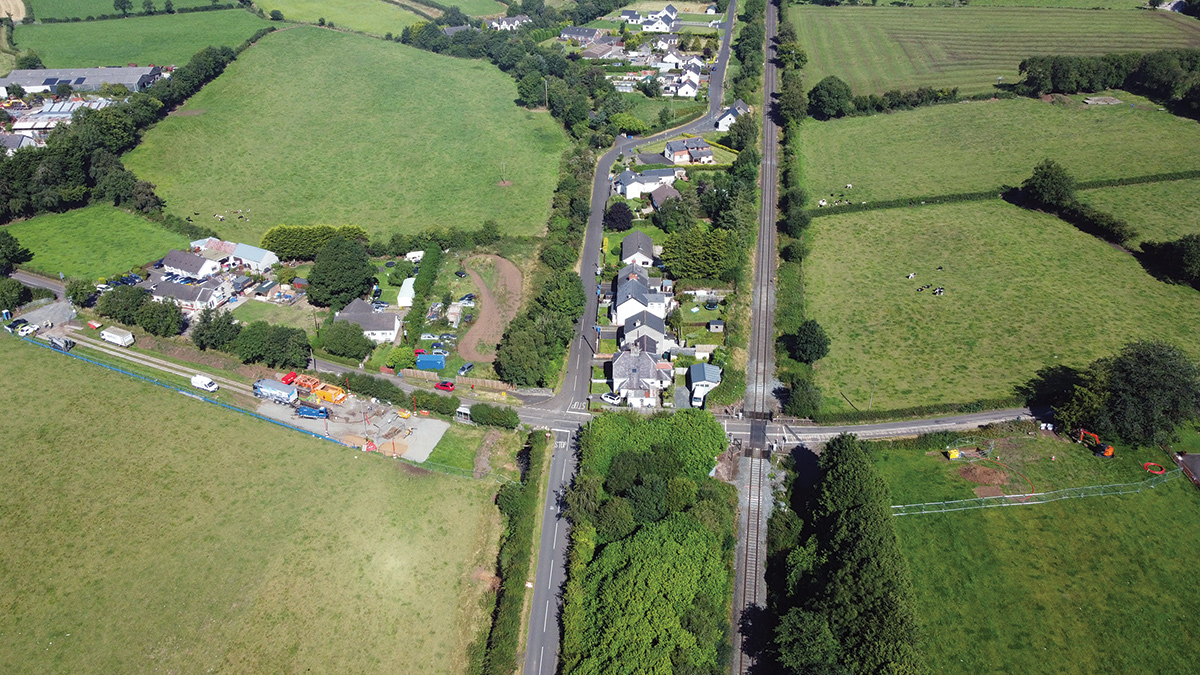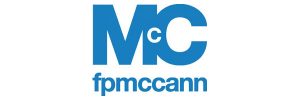Stiles Way Trunk Main (2024)

13 tonne excavator lifting pipe during pulling - Courtesy of Farrans/Glanua Group JV
Located just outside Randalstown, Co. Antrim, the new trunk main was installed along the Thornhill Road, Creevery Road, Lisnevenagh Road (A26) and Barnish Road. The existing 560mm ring main around Antrim town was susceptible to frequent failures and replacement of this main was practically and economically unfeasible. To combat these problems, NI Water developed a resilience solution to prevent future issues and reinforce supply to approximately 4,000 properties and businesses in the Randalstown and Antrim areas.
Project scope
NI Water is committed to improving the resilience of the water supply infrastructure across Northern Ireland, and as part of their IF105 Integrated Partnerships Framework, identified the need to carry out works to replace 4,200m of 9” diameter asbestos cement (AC) main along the Creveery and Barnish Roads (crossing a dual carriageway and a railway line) with 315mm diameter HPPE main.
This would provide an effective and sustainable alternative supply to Randalstown, providing mitigation for ongoing issues with the existing supply located on Stiles Way.
The project included the following scope:
- Installation of 4.2km of new 315mm HPPE (SDR17) trunk main and decommissioning of existing 6” and 9” asbestos cement mains including:
- Crossing of the main Belfast to Derry/Portrush Railway line and River Millburn via Horizontal Directional Drilling methodology.
- Crossing of the A26 Dual Carriageway linking Barnish Road and Creevery Road.
- Service transfers from the existing 6” and 9” Asbestos Cement mains to the new 315mm HPPE main.
- New PRV arrangements at Creevery Road/Thornhill Road and Barnish Road/A26 connection points to optimise network pressures.
- Eight connections to the existing network.

Site overview – Courtesy of Farrans/Glanua Group JV
Early contractor involvement (ECI)
Farrans/Glanua Group JV was engaged in early 2021 under a NEC4 Option ‘C’ contract to carry out site investigation works to enable detailed designed. This provided the opportunity to liaise with the necessary specialist contractors and gain their experience, knowledge and input into developing the detailed design and construction methodologies.
Stiles Way Trunk Main: Supply chain – key participants
- Delivery contractor: Farrans/Glanua Group JV
- Design/project management: WSP UK Ltd
- Civil design: Jacobs Design
- Main contractor (civils): Farrans Construction
- Surveyors (under-track crossing): Clifford & Gregg Ltd
- Surveyors (survey & as-builts): Geodynamics
- Specialised drilling contractor: Markey Drilling Ltd
- Pipe welding: PE3 Pipeline Services Limited
- M&E works: Enisca Ltd
- Traffic management: McVeigh Contracts Ltd
- HDPE pipe & fittings: APP Fusion Group
- Supply of flow meter: Park Electrical Services
- Precast concrete manholes & cover slabs: FP McCann
- Quarry products & reinstatement: Northstone Materials Ltd
- Quarry products & reinstatement: James Stevenson Quarries Ltd
Construction
The construction contract was awarded under NEC4 Option ‘C’ Target Cost Contract to Farrans/Glanua Group JV. Construction began in February 2022 and took place over a 14-month period at a total cost of £2.4m. Due to the proximity of the works to the A26 and the Belfast to Derry railway line, early engagement and liaison between DFI Roads, PSNI Traffic Branch, Translink, Farrans Construction and the traffic management contractor were required. A collaborative approach among all stakeholder ensured effective traffic management measures were implemented to protect the safety of road users directly affected by the works and those passing by.

Ditchwitch ready for action on Barnish Road – Courtesy of Farrans/Glanua Group JV
Due to favourable ground conditions, sections of the 4.2km stretch were installed via horizontal directional drilling (HDD) methodology.
This trenchless technique provided savings on aggregates, bitmac reinstatement and spoil disposal, while reducing the impact/footprint on the road. The site team strategically placed launch and retrieval pits at air valve and washout hydrant locations, removing the need for additional excavations. The excavations were also located away from driveway entrances, minimising impact and ensuring access was maintained for residents. The remainder of the pipeline was installed via open-cut methodology.
Following testing (Type 2 pressure test), commissioning works were undertaken in preparation for service transfers and bringing the new trunk main into service.
Eight new connections were made to the existing network with 66 services transferred from the existing 6” and 9” AC mains to the new 315mm main. Utilising the existing kiosk and telemetry unit, a new electromagnetic flowmeter and pressure transducer was fitted as part of a new PRV, meter and strainer arrangement to allow NI Operations to monitor flows and pressures over the telemetry network.
Belfast to Derry railway line and river crossing
Translink was engaged during the ECI phase of the works to understand the requirements/restrictions for installing the trunk main under the railway tracks. Following several months of design and documentation review, a Permit to Work was obtained.
As it was a strategic crossing, NI Water asset standards required the 315mm trunk main crossing to be sleeved inside a 450mm pipe.

(left) Site compound complete in advance of HDD crew arrival, (middle) towing head installed on pipe ready for pulling and (right), pipe pull completed – Courtesy of Farrans/Glanua Group JV
The Belfast to Derry railway line under-track crossing (UTX) was completed by horizontal directional drilling (HDD) methodology. During ECI, several bore holes were carried out parallel to the proposed drill shot (launch, centre and retrieval). All bore holes encountered rock (fractured basalt). However, as drilling operations commenced, the specialist contractor identified changing ground conditions.
As the drill shot progressed towards the river, the rock formation ended and changed to a softer ‘clay-like’ formation. This was confirmed via the change in colour and viscosity of the drill muds, indicating a soft formation with a high clay content. The ground conditions did return to rock approximately 15m from crossing under the railway line, but again, changed back to a softer formation as the drill shot approached the retrieval pit. The lack of consistency posed a serious problem for the rock drilling motor as it was difficult to steer back to ground level because of the soft clay formation.
To proceed with the drill shot and deal with the varying ground conditions, the contractor alternated between the rock drilling head and conventional drilling head. However, this meant pulling the drilling rods in and out to change the head and as its size increased, the risk of the bore hole collapsing also increased.
Following an on-site review with the contractor, NI Water and designers, it was decided to abandon attempts to install a 450mm sleeve and instead install the 315mm main directly. Following several weeks of drilling works, the 315mm main was successfully installed under the rail and river.
The railway line was surveyed for a period of two weeks prior to commencement of the works in order to establish baseline level readings via small targets attached to the side of the rails at 2m intervals. For the duration of the works, surveys were undertaken three times per day to monitor settlement and heave. The track was monitored for a further two-month period following completion of the UTX.

Fluid recycler in operation – Courtesy of Farrans/Glanua Group JV
A26 dual carriageway crossing
The A26 is a major arterial route in Northern Ireland connecting Coleraine in the north to Banbridge in the south of the province. It carries in excess of 30,000 vehicles per day, making it one of Northern Ireland’s busiest carriageways.
Due to the staggered junction between Creevery Road and Barnish Road, lack of available land and ground conditions (rock), a trenchless crossing of the A26 was not feasible. As such, the works were staged and completed in sections to maintain traffic and minimise disruption:
- Stage 1: North-bound inside lane
- Stage 2: Outside lanes and central turning lanes (north and south bound).
- Stage 3: South-bound inside lane.
Lengths of 450mm twin wall pipe were installed crossing the carriageway via open-cut methodology. Upon completion, a 315mm string of pipe was welded and successfully slip-lined across the carriageway.
A 1.2m wide tar planer was utilised to remove the asphalt layer on the parallel stretch of carriageway and two main-laying crews worked round the clock to ensure the works were completed on time.

315mm pipe welding – Courtesy of Farrans/Glanua Group JV
Public relations
Farrans and NI Water Communications, issued press releases and engaged with a range of stakeholders including Councillors (for roads affected and programme), council staff (bin collections etc), Roads Service (roads impact), Translink (school bus routes), Rivers Agency (River Millburn), landowners, businesses, and schools.
Letter drops took place in advance of each section of road works and closures to advise the residents and businesses of the planned works. Variable message boards were erected on the A26 (north and south bound) and business-specific signage was installed around the works area/diversion routes to reduce the impact to business owners and customers. NI Water’s 24-hour dedicated customer care ‘Waterline’ number, was issued on all correspondence to the public and displayed on all signage which ensured that any queries about the work were dealt with quickly and effectively.
To minimise the impact to the public while working on the A26, 24-hour working was employed to complete the pipelaying in the shortest possible timescale. Additionally, roads were temporarily reopened around holiday periods to minimise disruption.
Project summary
Testing and commissioning of the new 315mm trunk main began in December 2022 with the final connection to the network completed in February 2023. The new main provides a strategic backup system, bolstering NI Water’s existing infrastructure to reinforce supply to approximately 4,000 properties.

Signage & traffic management - Courtesy of Farrans Glanua JV

(left) Pipe placed in trench Barnish Road prior to backfill and (right) A26 after concrete backfill - Courtesy of Farrans Glanua JV





